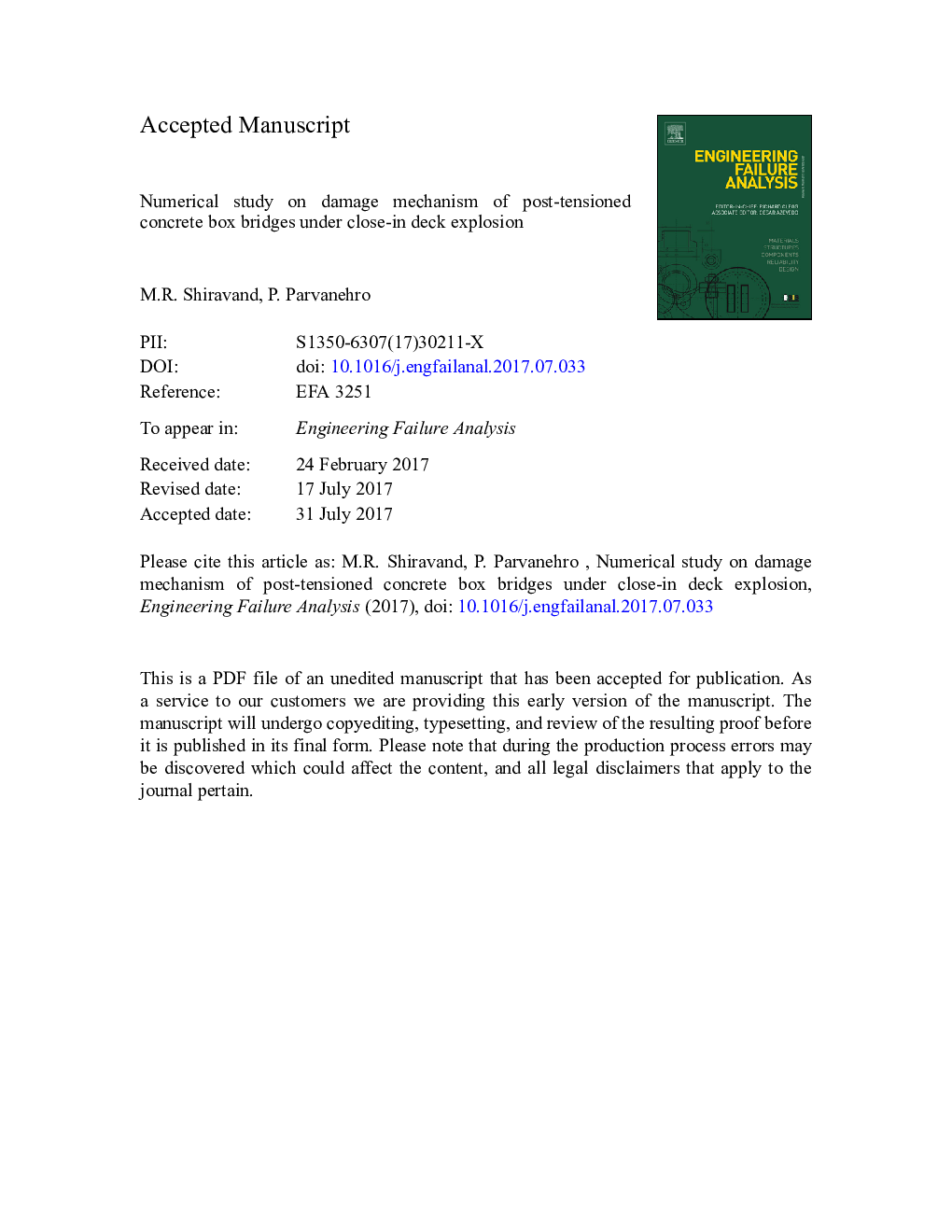| کد مقاله | کد نشریه | سال انتشار | مقاله انگلیسی | نسخه تمام متن |
|---|---|---|---|---|
| 5013459 | 1462945 | 2017 | 26 صفحه PDF | دانلود رایگان |
عنوان انگلیسی مقاله ISI
Numerical study on damage mechanism of post-tensioned concrete box bridges under close-in deck explosion
ترجمه فارسی عنوان
مطالعه عددی بر مکانیزم آسیب رساندن پل های بتنی بعد از کشش تحت انفجار نزدیک عرشه
دانلود مقاله + سفارش ترجمه
دانلود مقاله ISI انگلیسی
رایگان برای ایرانیان
کلمات کلیدی
انفجار، پل کانتی، بتن پس از کشیدگی، پل جعبه ای شبیه سازی انفجار،
موضوعات مرتبط
مهندسی و علوم پایه
سایر رشته های مهندسی
مهندسی صنعتی و تولید
چکیده انگلیسی
To understand the behavior of post-tensioned concrete box bridges under blast loads, a typical concrete cantilever bridge is exposed to close-in deck explosion. The objectives of the current study are investigating the blast wave resonance entered into the box (confined condition) and the bridge's main components damage mechanism. For this purpose, 5, 150, 355, 550, 700 and 1200Â kg TNT weights are chosen as load varying cases and parametric study analysis are done in two main explosion scenarios. Averagely, after the explosion, high impulsive blast loads hit the bridge deck and penetrate into the deck. Less than 5% of the incident blast overpressure succeeds to propagate into the box-shaped deck. However, according to the confined conditions within the box, blast waves can be amplified up to about 2.7 times. In most load cases, the concrete is damaged in the anchorage zone of some pre-stressing tendons, leading to the loss of effective post-tensioned forces. On the other hand, those tendons directly exposed to the blast impact are observed to be failed and the crushing of the concrete reduces the effective post-tensioned forces and stability of the entire bridge remains uncontrolled. Therefore, it is necessary to apply some energy absorbing or properly fused systems to reduce the close-in deck explosion effects. The obtained results can help bridge designers recognize weak points along post-tensioned box bridges under explosion loads and contribute into easier identification of retrofit and strengthening methods.
ناشر
Database: Elsevier - ScienceDirect (ساینس دایرکت)
Journal: Engineering Failure Analysis - Volume 81, November 2017, Pages 103-116
Journal: Engineering Failure Analysis - Volume 81, November 2017, Pages 103-116
نویسندگان
M.R. Shiravand, P. Parvanehro,
